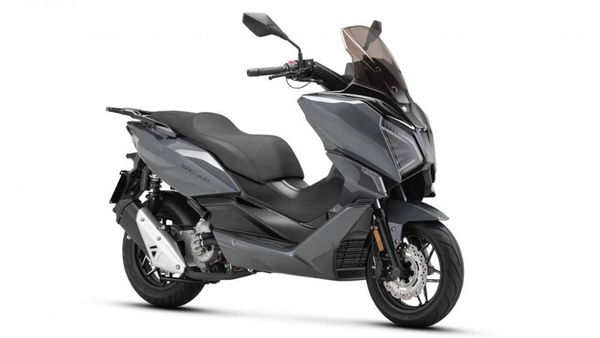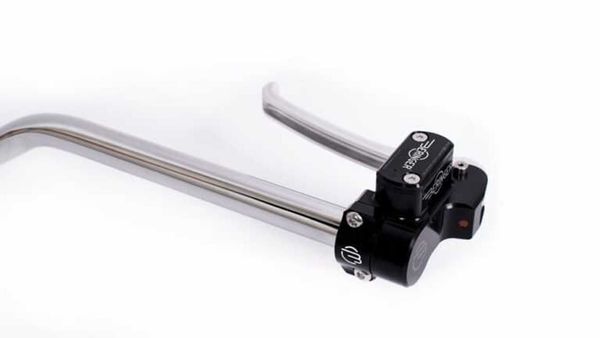If you’re interested in motorcycle history at all, chances are excellent that you’ll probably never run out of new things to learn about. While you might have a passing (or deeper) familiarity with modern marques that are still active in 2023, motorbikes as a category have been around for over a century—and because that’s the case, there are far more marques than you and I will probably ever know about, and that have subsequently fallen by the wayside.
In that spirit, are you familiar with the name Condor? It was a Swiss motorcycle manufacturer that started out, like so many did, as a bicycle manufacturer. (Although it’s no longer with us, this Condor lasted a lot longer than three days.)
The year was 1893, and a guy by the name of Edouard Scheffer decided to build a factory with brother, Jules, in a building that family friend Victor Donzelot happened to have available. It was located in Courfaivre, in the Jura mountains of Switzerland. The name they started the company under was the extremely sensible Scheffer Freres, or Scheffer Brothers. By the end, after a couple of company name and several engine changes, we’re going to tell you about this lovely Ducati-powered A350—but first, a bit of history.
The Beginning
Scheffer Freres’ chosen location was important, because Edouard and Jules planned to work with metal, and they needed electricity. Since the building was close to a river, the required electrical power was relatively easy to come by—and pretty soon, the brothers were off to the races (literally, in some cases; some of their early motorcycles took victories in multiple disciplines throughout the 1920s, including the International Six Days Trial).
The Scheffer brothers started out making bicycles, and pretty soon, their machines were in use by both the Swiss postal service and military. As time rolled along, though, crafty engineering types started to get all kinds of wild ideas about motorizing their bicycles—and the Scheffers were no exception.
Sometime in the early 1900s, the very first 1.5-horsepower engine was fitted into the very first reinforced Scheffer Freres bicycle frame. Also somewhere around this time, the firm adopted a certain big Andean bird as its logo—and in hindsight, that does seem like a bit of foreshadowing.
You see, even though the name “Scheffer Freres” didn’t mention bicycles at all, the brothers recognized that since they were now taking on an entirely new identity, they should probably think about changing the company’s name. That’s why, in 1901, they decided to call the firm by the rather lengthy Manufacture Suisse des Cycles et Motos.
Since that name didn’t exactly roll off the tongue (even if you were fluent in French), they later changed it to Condor-Werke Aktiengesellschaft, or AG. (‘AG’ indicates that an entity is a public limited company, in both Swiss and German terms. That descriptive appellation is also still in use today.) For those unfamiliar, Switzerland has long been a nation with three languages commonly spoken: French, German, and English. Therefore, going from two French-language names to a clearly German-language name probably didn’t make anyone bat an eye.
Like so many smaller manufacturers at the time, the firm stuck to chassis design, which it already had some ideas about from its bicycle days. It chose to source engines from a parade of outside suppliers, including Zedel, Motosacoche Acacias Genève (or MAG), and others. This continued through WWI and after—and because there were so many suppliers to choose from, Condor saw absolutely no reason to try to develop its own engines. By 1925, it reportedly had a full range of motorbikes, from 250cc singles up to 998cc V-twins.
How WWII Changed Everything
As moto history fans are well aware, many a fledgling moto company faced hard times both during and in the aftermath of that war. Supply chain issues then, as now, called for a change in strategy. That’s why Condor decided to try its hand at making its very own engine—and just like a kid learning how to draw for the first time, it closely studied the engines that it admired.
Then Condor, uh, paid homage to at least one of those engines with an extremely similar design of its own. The engine in question? If you've guessed that it was the much-copied BMW R71 boxer, get yourself a cookie (you’ve earned it). That very similar engine powered the Condor A580, with the A designating a Swiss Army bike.
Condor did also make some civilian machines, but they were quite expensive by contemporary standards of the day. Although the company had a well-earned reputation for building robust machines, civilian riders also didn’t appreciate how heavy this bike was.
A Return to Standard Practices
By 1956, the Swiss army requested that Condor build something lighter and nimbler—and thankfully, as post-war stresses began to ease, the company was able to source engines from outside suppliers once more. Thus, Condor developed the A250—which was intended to have been powered by a little single-cylinder engine sourced from Maserati. For whatever reason, the cooperative agreement between Condor and Maserati didn’t work out, and it’s believed that only 30 Maserati-engined A250s were ever made.
Not wanting to throw all its hard work in the bin, Condor decided to try its hand at building its own 249cc single-cylinder engine from scratch. If you squinted, it looked a bit like a BMW R25 single, but once again, it wasn’t a direct copy—according to the Lane Motor Museum (which has one in its collection), none of the parts are directly interchangeable.
The Condor A350
Throughout the decades, before Condor had even settled on its avian-inspired company name, the company had contracts with the Swiss military. As a mountainous country, with plenty of tough terrain to cover, it’s obvious why the military would be interested in harnessing the power of sturdy, capable, reliable motorcycles.
Condor took what it learned from the A250 to make the A350—this time, using a Ducati bevel-drive overhead camshaft single-cylinder mill. No Desmo here—just simple, hardy, reliable, and easy to work on in the field. It used the 350cc mill found in Ducati Scramblers of the time, but in a lower-compression version (8.2:1, to be precise), with a 27mm Dell’Orto carburetor. Bore and stroke were 76 mm x 75 mm—almost perfectly square. In this state of tune, it produced about 25 horsepower at 7,500 rpm, according to Rider Magazine.
As Ducati used it in Scramblers, the engine was a stressed member—but Condor wanted to make something that troops could rack up the kilometers on over tough terrain without too much complaint. So, it developed a super-strong double-cradle frame design, complete with rubber motor mounts. (Hey, if it didn’t have to worry about engine development, then Condor’s engineers could instead concentrate their efforts on what they apparently did best, right?)
Gallery: 1970 Condor A350





Other practical touches included sturdy saddlebags for dispatches, rifle holders on either side of the saddle, and even a special matte-look aluminum paint so the full exhaust system wouldn’t accidentally glint in the sun and attract unwanted attention. Condor also deviated from Ducati’s execution in its own machines by adding an oil filter to the A350 in order to further enhance its reliability.
Condor went on to produce the A350 until 1978, and about 3,000 were thought to have been made over the years. As a testament to the bike’s reliability, they quite remarkably remained in Swiss Army’s service until 2001. (By that point, Condor was no more—and the Army reportedly switched to BMWs.)
If you’re interested in this specific 1970 Condor A350 example, it’s currently located in Bakersfield, California as of March 13, 2023. It’s about to go up for auction through the Bonhams online auction site, The Market, and interested parties can sign up on that site to be notified when the auction goes live. It has 30,609 kilometers on the clock, which is a little over 19,000 miles.
It’s estimated to go for between $1,500 and $2,500, which makes it relatively affordable in the realm of historic motorcycle collecting. However, if you’d prefer to simply stick to a much smaller model instead, Ace Models offers a 1:18-scale resin model that retails for about €164 (or $174).










